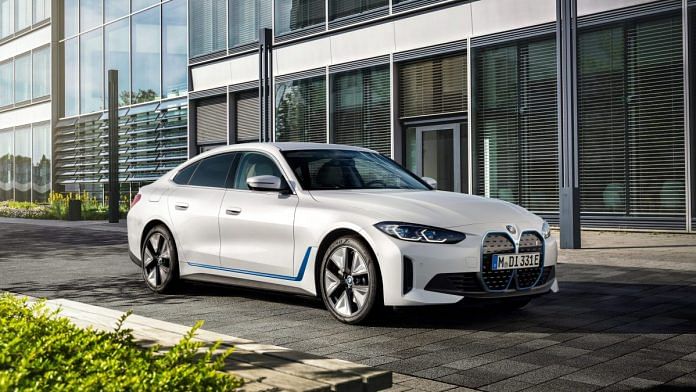On 20 February this year, I was enjoying the sunny weather in Goa, where the local people were looking forward to the annual invasion of Russian tourists. Unfortunately, Vladimir Putin had other plans for Russia, as earlier that day, Russian tanks and armoured personnel carriers streamed over the Crimean border and into Ukraine. And what had begun as a special operation, seven months on, looks increasingly like a humiliation for Putin whose ill-equipped and ill-trained troops are being given the fight of their lives by Ukrainian defenders.
That day in Goa, I was driving the Skoda Slavia sedan, which was to be launched soon. I loved the Slavia, just like its sibling, the Volkswagen Virtus. Since the launch of these sedans, they have both turned out to be strong competitors, and while the cars are mechanically identical, I tend to prefer the Czech model over the German, thanks to the Slavia’s great looks. But what do these sedans have to do with the war in Ukraine? Well, a few years ago, Skoda Auto Volkswagen India Private Limited (SAVWIPL) had decided to withdraw from the diesel segment. This was ostensibly due to the costs of adhering to the Bharat Stage 6 norms and also because of a partial fallout of the ‘Dieselgate’ emissions scandal that involved Volkswagen.
The Slavia and Virtus (as well as the Kushaq and Taigun) therefore only have turbocharged petrol engines, and while both engine options (1 litre and 1.5 litre) are excellent, the start of the Ukraine war meant that there was a massive run on the price of crude oil and an inevitable rise in the prices of refined products, petrol and diesel. While modern petrol engines, even turbocharged ones, are much more efficient than previous generations, with the fuel touching Rs 125/litre in certain Indian cities back then, petrol-power seemed doomed.
Also read: Google Maps gave new direction to driving. This app can make navigation even smoother
Of course, petrol prices fell. And after two years of depressed demand, the Indian automotive market has been having a bumper year. But interestingly, there have been subtle changes in the vehicles on sale. Not only are they getting frightfully more efficient, adoption of zero- emission electric vehicles has picked up as well. In the two-wheeler and three-wheeler segment in particular, the adoption of battery-powered vehicles has increased substantially, despite the higher costs, because users clearly see an economic benefit to such vehicles.
If you step out to check what sort of vehicle your latest food or e-commerce delivery came on, especially if you live in a big city, it is likely to be a vehicle powered by electricity. State transport corporations have also got the message, almost every new order for intra-city buses has been for electric buses. Even buyers of electric cars are seeing an abundance of choices coming their way. And despite infrastructure issues, the recent launch of Tata Tiago EV might spark off even more demand. Tiago EV is India’s first hatchback electric vehicle at an introductory price of Rs 8.5 lakh, the first electric vehicle available under Rs 10 lakh. The base version of the petrol Tiago costs Rs three lakh less.
Changes in the mass-market have not been as dramatic as in the luxury segment. Mercedes-Benz recently rolled out the first luxury electric sedan to be assembled in India, the EQS580 4Matic, with Minister for Road Transport and Highways, Nitin Gadkari inside the car. The EQS, which can be compared to the ultra-luxurious Mercedes-Benz S-Class sedan, is actually cheaper than the S350d and S450 4Matic, by quite a margin when you consider a lower rate of GST for electric cars and reduced or non-existent road tax and registration charges in some states. In some states, the EQS580 4Matic is Rs 30 lakh cheaper, and while it lacks certain features the traditional S-Class has, money talks. Not only is the electric version cheaper, it costs pennies to run per kilometer compared to its gas-guzzling siblings. “This is just the beginning for Mercedes-Benz India’s electric ambitions,” Santosh Iyer, vice-president, sales and marketing, MB India told me at the rollout.
While Mercedes-Benz India had always intended to produce the EQS at their Chakan plant even before the war in Ukraine, consumer preferences have changed dramatically. But that does not mean that there are no challenges in the electric switchover, particularly for India. There has been a recognition in the highest echelons of the government that India is highly dependent on China when it comes to electric vehicles. China has a dominant position in sourcing raw lithium as well as in other vital materials required for electric vehicles, including nickel, cobalt and rare earth elements.
Also read: For Indian buyers, Hybrids can be pitstop. EVs still the future
The Performance Linked Incentive (PLA) scheme as well as other sops for manufacturing, by the government, show that despite some missteps, it is trying to coax manufacturing into India. There has also been a major push by the government and conglomerates towards hydrogen power for transportation. Although hydrogen production in its various forms (black, grey, blue and green – the colours denote where the hydrogen has been sourced from) is still expensive and a sustainable and inexpensive method of production could still be decades from fruition.
However, the price shock in crude oil, natural gas and other commodities, after the beginning of the Ukraine crisis, seems to have taught the Indian government and vehicle consumers that the same old thing can’t carry on. Carmakers have responded by making more fuel-efficient vehicles and launching new technologies such as morestrong hybrids and many more electric vehicles. But what will the future hold?
@kushanmitra is an automotive journalist based in New Delhi. Views are personal.
(Edited by Anurag Chaubey)






